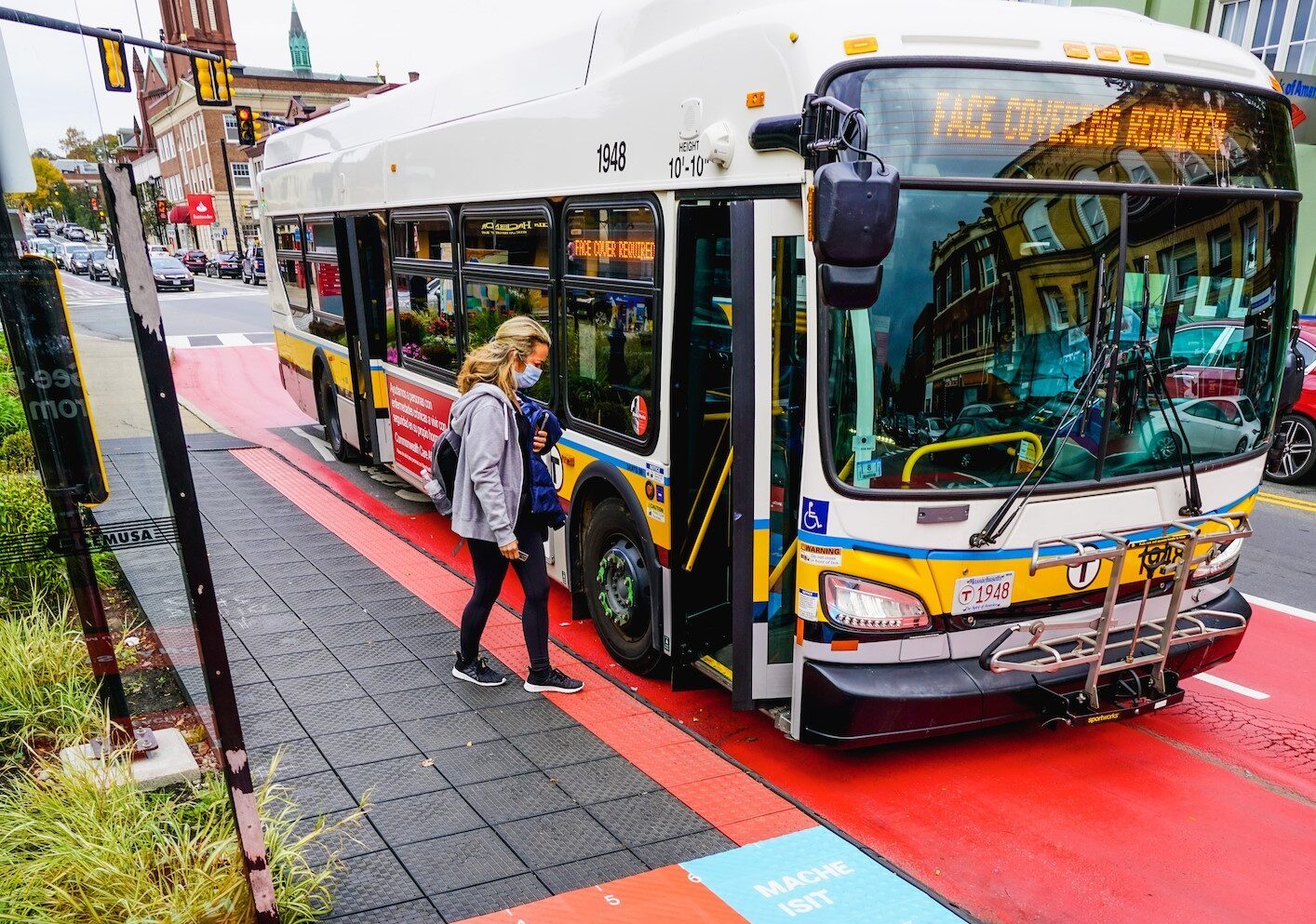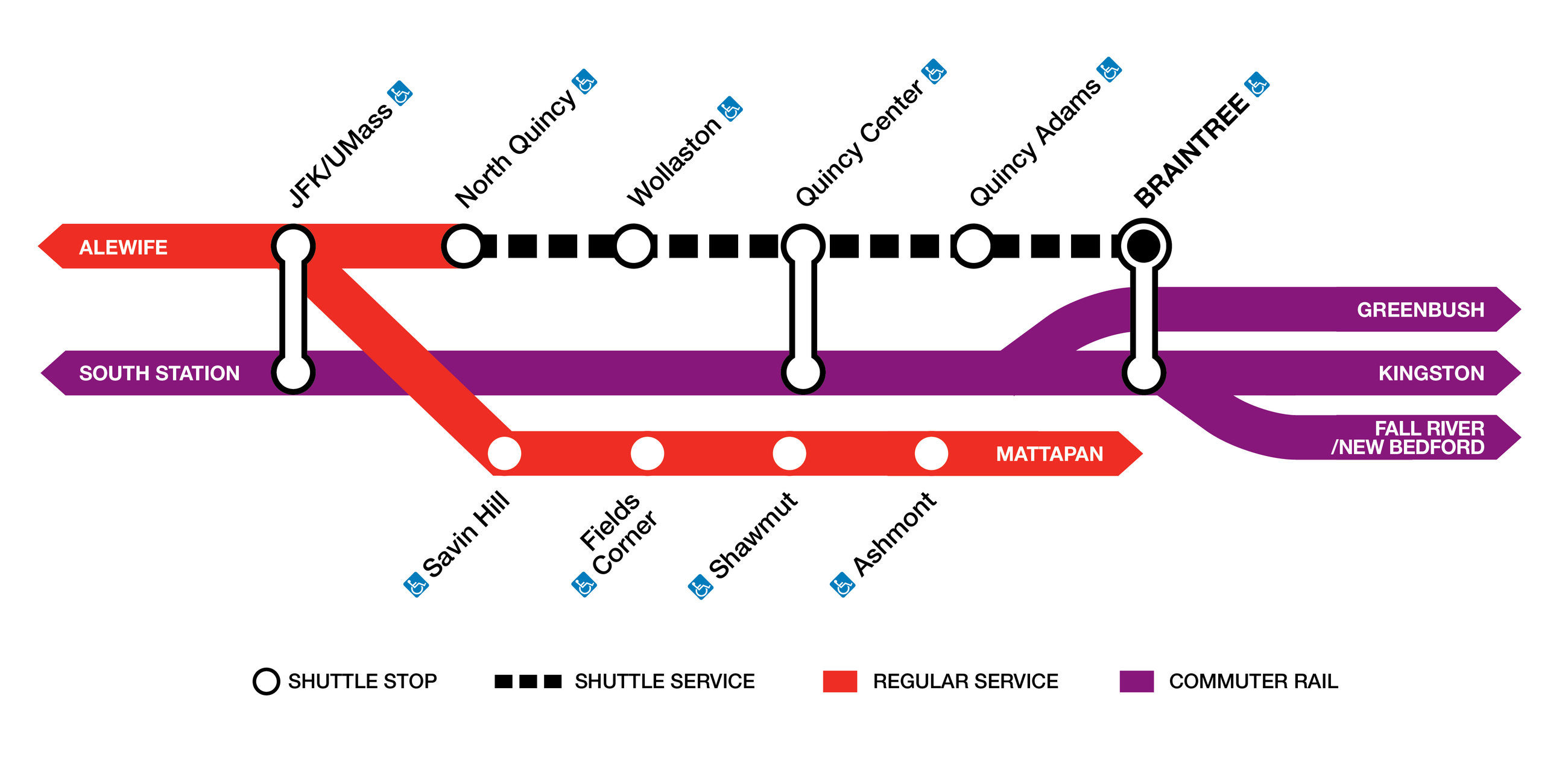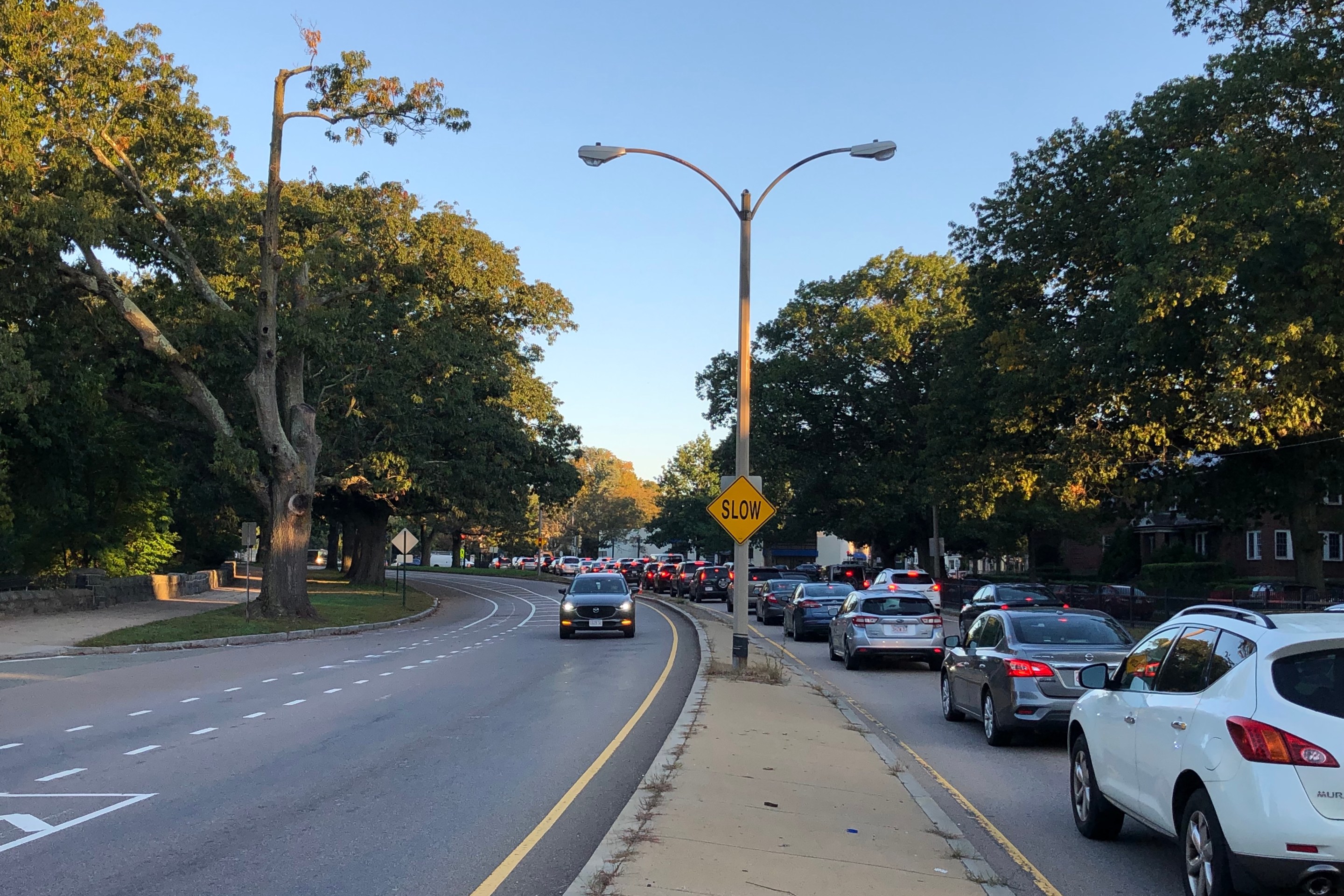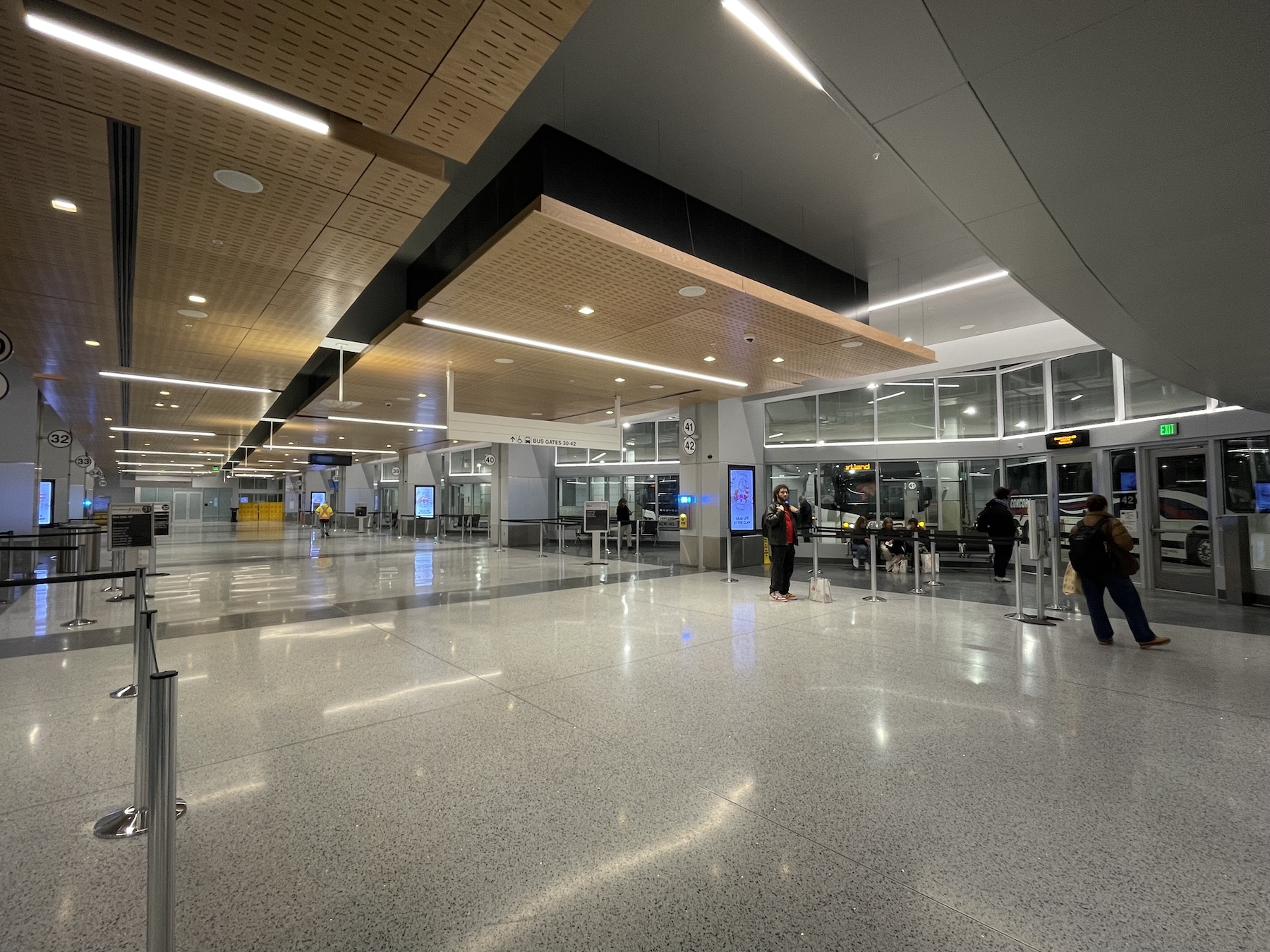This summer and fall, the MBTA is undertaking a once-in-a-generation, blank-slate redesign of its bus routes to adapt to the region's changing travel patterns, better serve fast-growing neighborhoods, and reduce inequities that force Black riders to lose more time stuck in traffic relative to their white counterparts.
Much of today's bus network has been inherited from century-old streetcar routes, with routes that feed into the T's downtown-oriented subway lines and schedules that focus on peak-hour commuters.
The T's planners have been collecting data on travel demand from surveys and anonymized cellphone location data to evaluate travel demand throughout the region and illuminate gaps in the current transit network.
A draft map of "high-priority corridors" highlights high-demand routes that currently have no direct bus service, other routes where existing service may not be adequate to meet demand, and potential new hubs in the bus network focused on high-ridership origins and destinations, like the Longwood Medical Area, the Seaport district, and Uphams and Fields Corner in Dorchester:
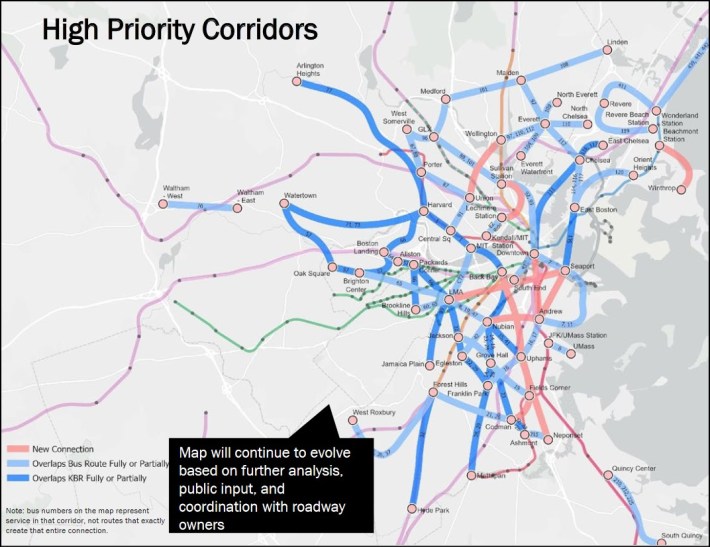
MBTA planners are also promising to give special focus to travel needs in highly transit-dependent neighborhoods like Roxbury, Mattapan, and Chelsea to address inequities in the current bus network.
A 2017 “State of Equity” report by MAPC, a regional planning agency, found that Black bus riders spent, on average, 64 more hours every year traveling than white bus riders, and Latinx bus riders lost an average of 10 hours a year compared to white riders.
In a May presentation to the MBTA's governing board, Christof Spieler, a planner who's assisting the T in the project, said that the new bus routes should ultimately provide "a simpler and easier-to-understand network" with more frequent-service key bus routes, better connections to major regional destinations outside of downtown Boston, and better all-day service that's less focused on peak-hour commuters.
But Spieler, who was also involved in a 2015 bus network redesign for Houston's Metro system that ultimately boosted Houston's bus ridership by 17 percent, also warned board members that changes would be controversial.
"We can make the network better for the vast majority of current riders, but to make that happen, some peoples' trips will change, and a few people's trips will get worse. Change is hard, and there are real tradeoffs," Spieler told board members in May.
The network redesign is proceeding in tandem with other efforts to improve bus service at the T: a new bus garage in Quincy is poised to break ground within the next year, and new bus lanes in transit bottlenecks around the region are allowing the T to run more frequent, more reliable service by wasting less time in traffic.
"The T needs new garages, more dedicated bus lanes, additional buses, and more operators," Kristiana Lachiusa, Director of Transit for the LivableStreets Alliance, told Streetsblog on Wednesday. "Transforming the bus network is great, but how can we actually get something transformational and hold the T accountable? We’re closely tracking those parts."
The T hopes to have a draft map of its new bus network later this year, and begin implementing the new network in phases over the next 3-5 years.
A T spokesperson confirmed earlier this week that the first phase of route changes from the bus network redesign would be implemented next year, in 2022.
Public meeting information:
MBTA Better Bus Project Virtual Open House
Thursday, August 26, 6 pm
